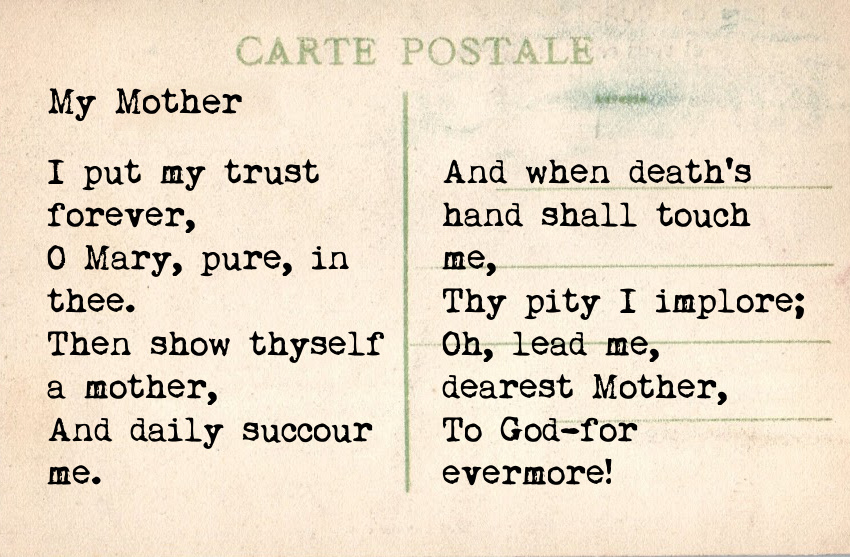Chapter 40 of "Our Lady of Lourdes" explores Bernadette's experiences following her visions, particularly the significance of the Virgin Mary's temporary absence, which emphasizes humility and divine grace. It reflects on the emergence of the miraculous spring at the Grotto, symbolizing spiritual cleansing and renewal. The chapter underscores the importance of faith and the profound impact of these events on the lives of believers.
Find more chapters here.
THIS absence on the part of the Virgin was, doubtless, intended to maintain Bernadette in a state of humility and in the consciousness of her own nothingness; but, in addition to this, it contained, perhaps, for Christians, a high and mysterious precept, the import of which will not escape the attention of souls accustomed to contemplate and admire the secret harmony which exists in works proceeding from God.
If heaven, on that day, had closed itself to the eyes of Bernadette, if the celestial Creature, who used to appear to her in visible flesh, had seemed to vanish for a moment, the Fountain—proof of the reality and power of that superhuman Being—which had sprung forth the day before, and was continually increasing, was visible to the eyes of all, and trickled on the sloping floor of the Grotto in sight of the astonished multitude.
The Vision had withdrawn in order to allow her work, so to say, to speak. She had withdrawn and remained silent in order to allow an opportunity of speaking to the Church of that country, whose words at the introit of the Mass and at the answers of Matins, might serve as an commentary on this singular fountain which had suddenly appeared beneath the hand of Bernadette in her state of ecstacy.
While in fact all this was taking place at the Grotto, before the miraculous Spring which had burst forth on the right side of the arid rock, the memory of another Spring—the most illustrious and life-imparting of all those which for the last six thousand years have watered the heritage of Adam—was being celebrated in the diocese of Tarbes, and in several dioceses of France. That day, February the 26th, 1858, being the Friday of the first week in Lent, was the Feast of the Holy Lance, and of the Nails of Our Lord. And the Spring of which we speak and the memory of which was then being glorified in the Office prescribed for the diocese, was the great divine Fountain which the lance of the Roman centurion, piercing the right side of the lifeless body of Christ, had made to flow as a river of life for the regeneration of earth and the salvation of the human race. “Vidi aquam egredientem de templo a latere dextro; et omnes ad quos pervenit aqua ista salvi facti sunt.” “I saw water flowing from the temple on the right side, and all to whom that water came were saved.” Such was the exclamation of the Prophet, when he contemplated the prodigies of the mercy of God in the dim vista of ages. “In that day,” said the priests in the Office of Matins, “there shall be a fountain opened for the house of David and for the inhabitants of Jerusalem, which shall serve to purify the sinner and all such as are polluted.”
By these coincidences, wonderful in themselves and which we urgently beg our readers to verify for themselves in the places pointed out in the note, did the Church of that place reply with dazzling clearness to the innumerable questions proposed around the marvelous Fountain which was spouting forth its waters on the right side of the Grotto. The Spring of water which had just made its appearance at the base of the Pyrenees, derived its source, by some mysterious process of infiltration, from that fast stream of divine Grace which, under the Nails of the soldiers and the Lance of the centurion, had begun to flow eighteen hundred years ago from the summit of Mount Golgotha.
Such was the original principle to which we must retrace our steps, in order to discover the hidden origin of the miraculous Spring, and it was well that the Offices celebrated at its starting point, at the very place where it had pierced the earth, should of themsleves lead the mind towards these mystic heights. With regard to the practical results and external effects which were to be produced abroad by this mysterious fountain, their interpretation and secret were naturally not to be sought at its centre and starting-point, nor in the confined circle, and at an exceptional feast of a particular diocese, but rather, in the universal Offices which the Catholic, Apostolic, and Roman Church was at that moment celebrating throughout the Christian world. Now, this very day, February 26th, 1858, being the Friday of the first week in Lent, the Gospel appointed for the Mass contained the following words, which need no comment: “Now, there is at Jerusalem a pond called Probatica which, in Hebrew, is named Bethsaida—having five porches. In these lay a great multitude of sick, of blind, of lame, of withered, waiting for the movement of the water. And an angel of the Lord went down at a certain time into the pond, and the water was troubled. And, he that went down first into the pond, after the motion of the water, was made whole of whatever infirmity he lay under.


No comments:
Post a Comment